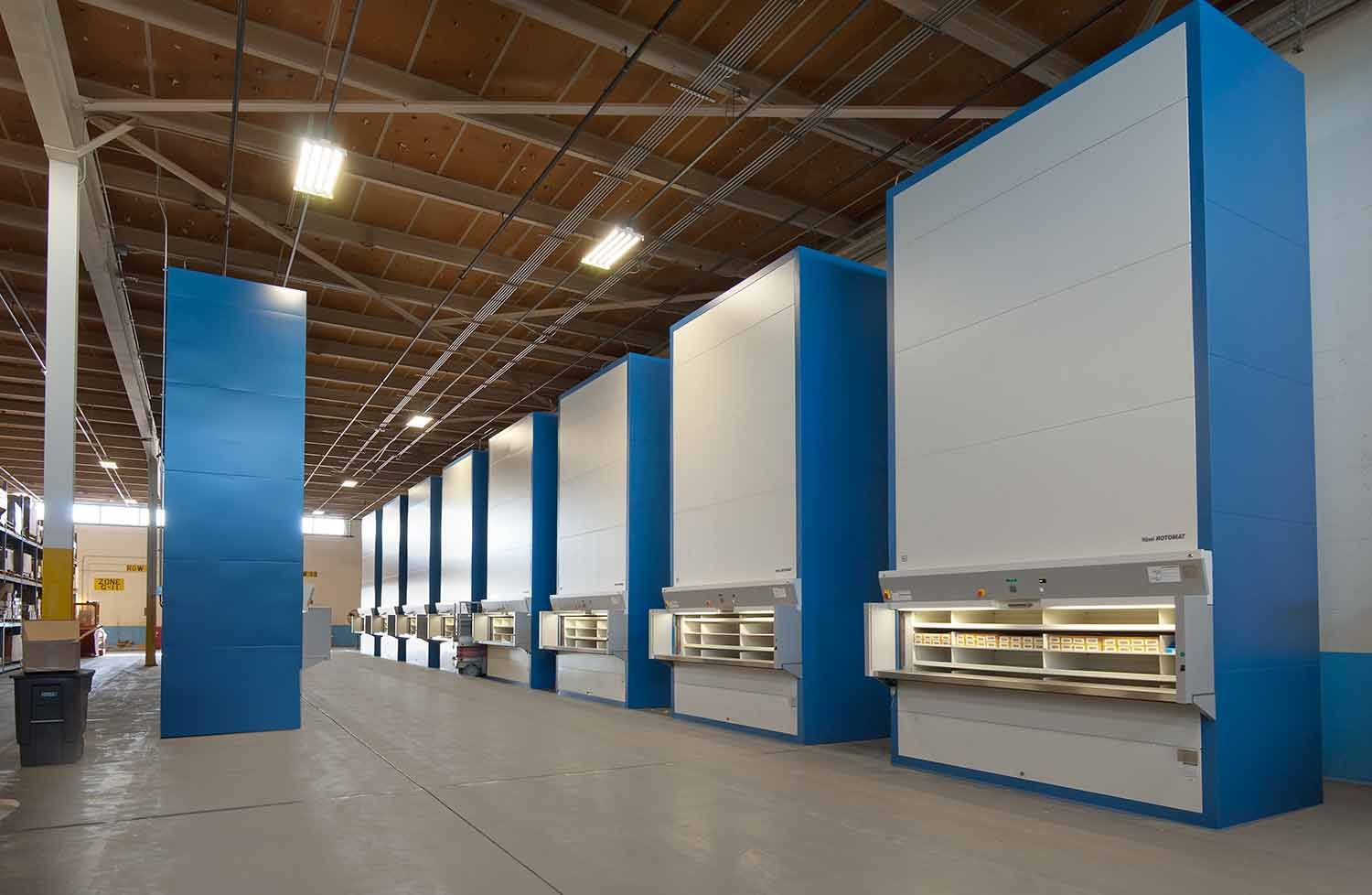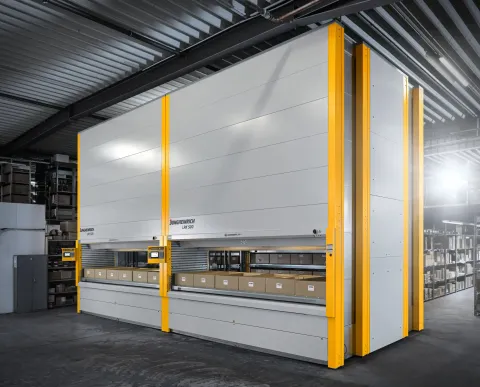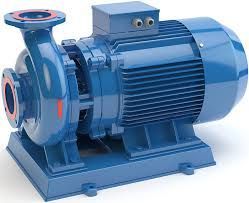Discover How Vertical Lift Module Systems Boost Storage Efficiency
Vertical Lift Module (VLM) systems are automated storage and retrieval solutions designed to maximize vertical warehouse space. These systems consist of two columns of trays with an automated lift in between that stores and retrieves items efficiently.
The concept was developed to address the growing need for compact, organized, and intelligent storage in manufacturing and logistics sectors. As e-commerce and global distribution networks expanded, warehouses began facing severe challenges in managing limited floor space and increasing inventory demands.

VLMs emerged as a modern solution—providing quick access to stored items, minimizing human error, and optimizing both space and time. They are now a standard feature in advanced logistics centers, automotive parts depots, medical facilities, and electronics warehouses.
Importance
In today’s fast-paced supply chain environment, storage efficiency directly impacts operational success. Businesses across industries are under pressure to handle higher product volumes while maintaining accuracy and minimizing labor costs.
Vertical Lift Modules address these challenges by offering:
-
Space Optimization: Utilize unused vertical space, reducing the footprint by up to 85% compared to traditional shelving.
-
Increased Productivity: Automated retrieval speeds up order picking and reduces operator travel time.
-
Inventory Accuracy: Integrated software provides real-time tracking of stored items, reducing misplacement.
-
Ergonomic Benefits: Products are delivered at waist height, minimizing bending or reaching for workers.
-
Security and Safety: Controlled access and enclosed systems prevent damage, dust, or unauthorized handling.
This efficiency translates to measurable cost savings. For example, in high-density environments like e-commerce fulfillment centers, adopting a VLM can improve order throughput by up to 60% and reduce picking errors by over 70%.
Who benefits most:
-
Warehouse operators and logistics companies needing high-density storage.
-
Manufacturers managing raw materials and spare parts.
-
Healthcare and pharmaceutical facilities requiring secure, traceable storage.
-
Retailers and e-commerce hubs optimizing stock accessibility.
Recent Updates
The automation and smart storage sector has evolved rapidly in the past year (2024–2025). Technological advances are making VLM systems more connected, efficient, and sustainable.
| Trend/Development | Impact on Operations |
|---|---|
| Integration with Warehouse Management Systems (WMS) | Improved real-time tracking and inventory control. |
| IoT and Sensor Integration | Predictive maintenance and system health monitoring. |
| Energy-Efficient Motors | Reduced power consumption and carbon footprint. |
| AI-Driven Order Sequencing | Faster and more accurate picking cycles. |
| Cloud-Based Control Software | Enables remote monitoring and performance analysis. |
| Modular Expansion Design | Easier system scaling for growing businesses. |
A notable update came in early 2025, when leading automation companies like Kardex Remstar and Hänel introduced AI-assisted VLM software capable of learning pick frequency patterns and dynamically rearranging trays for higher efficiency.
These smart systems adapt to operational changes without manual reconfiguration—demonstrating the trend toward self-optimizing warehouses.
Laws or Policies
Vertical Lift Modules operate within the framework of workplace safety, equipment standards, and building regulations. Governments and organizations have issued several guidelines to ensure that automation technologies meet safety, ergonomic, and environmental standards.
Key regulatory aspects affecting VLM usage include:
-
OSHA (Occupational Safety and Health Administration, USA): Ensures worker safety by requiring ergonomic design and proper machine guarding.
-
EN 528 / ISO 3691-4: European and international standards for automated storage and retrieval systems’ safety requirements.
-
BIS Safety Standards (India): Defines mechanical and electrical safety for automated equipment used in industrial environments.
-
Energy Efficiency Directives: Encourage the use of low-energy drives and regenerative systems to minimize power usage.
-
Fire and Building Codes: Mandate the spacing and fire suppression systems for tall storage structures.
Compliance with these laws ensures that VLMs operate safely and sustainably. Moreover, automation projects may qualify for government incentives or tax benefits under industrial modernization or energy-efficiency programs, depending on the region.
Tools and Resources
Several digital platforms and tools help organizations plan, manage, and optimize their VLM operations. From configuration software to productivity calculators, these resources simplify implementation and ensure return on investment.
Helpful Tools and Platforms:
| Tool/Platform | Purpose | Highlights |
|---|---|---|
| AutoCAD & SolidWorks | Design and plan VLM installations. | Enables accurate spatial layout and 3D modeling. |
| Kardex PowerPick Global | Warehouse management software for VLMs. | Real-time tracking, reporting, and inventory control. |
| HänelSoft® | System control for Hänel VLMs. | Integrates picking orders and batch management. |
| SSI LOGIMAT® WMS | Management and monitoring for automated lift systems. | Supports multi-lift synchronization. |
| Vertical Storage ROI Calculator | Estimates savings from implementing VLMs. | Calculates efficiency and payback period. |
| SAP Extended Warehouse Management (EWM) | Integration tool for large-scale facilities. | Centralized inventory coordination. |
Industry Resources and Websites:
-
Material Handling Industry (MHI.org) – Reports and trends on warehouse automation.
-
Modern Materials Handling Magazine – Latest case studies and news on storage technologies.
-
Logistics Management Portal – Software reviews and ROI comparison tools.
FAQs
1. What is a Vertical Lift Module (VLM)?
A VLM is an automated storage and retrieval system that uses vertically arranged trays to store goods compactly. It retrieves items automatically when requested, saving time and space.
2. How does a VLM improve warehouse efficiency?
By automating storage and retrieval, a VLM reduces walking time, increases accuracy, and optimizes space utilization, leading to faster operations.
3. Can VLMs integrate with existing inventory systems?
Yes, most modern VLMs integrate with Warehouse Management Systems (WMS) or ERP software to ensure seamless inventory visibility and control.
4. Are VLMs suitable for small businesses?
Yes. Modular systems allow customization based on available space and inventory size, making them ideal for small and mid-sized enterprises.
5. What maintenance do VLM systems require?
Routine inspections, lubrication of lift mechanisms, and software updates are recommended. Many modern VLMs feature IoT-enabled predictive maintenance.
Final Thoughts
Vertical Lift Module systems represent the next step in intelligent warehouse management. They not only address the challenge of limited space but also redefine how organizations approach inventory handling, employee safety, and operational efficiency.
The combination of automation, data connectivity, and ergonomic design makes VLMs a cornerstone of the modern warehouse. As industries continue to digitalize logistics, these systems will play an increasingly important role in sustainable and scalable operations.
Whether implemented in a manufacturing plant, logistics hub, or retail warehouse, a VLM system helps businesses store smarter, move faster, and operate safer.





